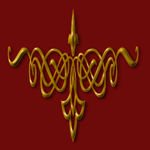





|
|
Oddfellow's Building - Jackson, California | ||
|
Though the present Odd fellows' - Wells Fargo building is dated by plaque and tradition from 1855, its site on August 23, 1862, was vacant ground. That was the date, you may remember, of Amador county's and jackson's most destructive urban fire. It made ash of the Fulton market building there and most of the town. |
||
That is the building in which butcher Frederick Schober (Schober avenue on Peek's hill) would later be housed. That is the lot on which "colonel" Allen would construct his second "Union house," part of which became the Oddfellows' building almost a decade later. Wells Fargo and Company established offices throughout the West as towns sprang up. So thereafter, the Western Union Telegrah Company established offices also. Charlie Park standing at center of this 1907 photograph, served as the agent for both companies. |
|
|
|
In the spring of 1854 when our French architectartist Parish (nee Parisian) sat somewhere on Peek's hill and sketched the town, the Fulton market building housed, on the street level, the market and butcher shop, and Wells and company's blacksmith shop... Men with the names of Talcott Willis, Richard H. Halls, Joel A Loveridge, Thomas I. Armstrong and Frederick R. Reeves all shared ownership in the northerly part, a 14 foot wide lot and building. In most of these deed descriptions we find nearest south of the market T.D. Wells' or Wells' blacksmith shop. Those two composed the Fulton market building shown. To the south of the building, not shown in the drawing, was an alley by which the owners reached the property behind. As owners of a butcher shop, they needed space for "corrals, barns and other buildings .. .in carrying on the butchering business." Look at an assessor's map of downtown jackson today. In block seven you will see that only lot two extends from Main to Summit. In the key year of 1855 when tradition and plaque tells us that "the Wells Fargo building was erected there" the actual occupants of the lot continued to be the Fulton market and T.D. Wells' blacksmith shop. Wells, Fargo and company express and banking in 1855 was located across the street, either in the first "Union house," or next north of it in the Low building, where the savings and loan is now. Soon, the writer will specify the Wells, Fargo locations. But it sure is understandable nearly a century after that someone may have believed that Wells and company, the blacksmith, was really Wells, Fargo express company? In February, 1855, j.C. Mead sold half ownership to Elbert Austin (for $1400) in the Fulton market "bounded south by Higby's lot and Wells & Co. blacksmiths." Austin, in turn, sold to Briggs and Burris for $100 profit. By now, Jackson's town trustees had adopted an ordinance prohibiting the slaughter of animals within the townsite. Hence, that alley to the corrals in the rear became another lot. The writer is not certain if it ever was built upon until 1862-63, or still remained ingress to the rear. Nonetheless, today's "lot two" was in 1856 at least two lots and possibly three. On March 31, 1856, the alley lot went to Sharp and Davidson who owned the corner drug store. Still north of it, the "lot of blacksmith Wells and White." In a photocopy of an August, 1856, Amador Sentinel which Logan has, you can find an ad dated from that May announcing that Fred Schober has taken over the "Union and Fulton Market," probably renting. Later, in October, 1858, Schober bought from C.T. Briggs the butcher shop portion of the Fulton market building including the "old corral on the hill." Hence, in 1855, where the Wells Fargo and Oddfellows' building was supposed to have been, the Fulton market and a blacksmith stood. That wooden, two-story frame which you see on the prior page, remained there until that fateful August 23, when it, like most of jackson, burned down. |
||
Return to our Jackson Tour or click on our Miner to end your Tour 
|
||
Information, photographs courtesy of the Amador County Archives, The Historical Marker Database, The Chronicling America Database, and Larry Cenotto, Amador County's Historian CONTACT US
|
||
